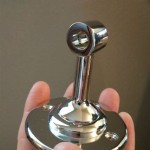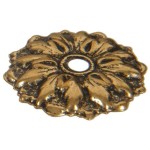How Do I Mirror My Android Screen On Windows 10?
Mirroring an Android screen on a Windows 10 PC offers several advantages, from enjoying mobile games on a larger display to conveniently sharing presentations and photos. Several methods facilitate this screen mirroring functionality, each catering to different needs and technical capabilities.
Using the Connect App (Wireless Display)
Windows 10 includes a built-in wireless display feature accessible through the Connect app. This method offers a relatively straightforward approach to screen mirroring for compatible devices.
Key Points:
- Ensure both the Android device and the Windows 10 PC are connected to the same Wi-Fi network.
- On the Windows 10 PC, open the Connect app by searching for it in the Start Menu.
- On the Android device, navigate to the screen mirroring settings. The exact location may vary depending on the Android version and manufacturer (e.g., "Cast," "Wireless Display," "Smart View").
- The Android device should detect the Windows 10 PC listed as a wireless display. Select the PC to initiate the connection.
- The Android screen should then be mirrored on the Windows 10 PC.
Utilizing the Microsoft Your Phone App
The Your Phone app provides a deeper integration between Android devices and Windows 10, including screen mirroring capabilities for select Samsung devices. This method offers additional functionalities beyond basic screen mirroring.
Key Points:
- Install the Your Phone app on the Windows 10 PC from the Microsoft Store if it's not already installed.
- Install the Link to Windows app (formerly Your Phone Companion) on the Android device from the Google Play Store.
- Follow the on-screen instructions to link the Android device and the Windows 10 PC.
- Within the Your Phone app on the PC, locate the "Phone screen" option.
- Clicking this option will initiate the screen mirroring process, provided the Android device is compatible.
- Some devices may require granting additional permissions on the Android device for screen mirroring to function correctly.
Employing Third-Party Mirroring Applications
Numerous third-party applications offer screen mirroring functionality for Android devices to Windows 10 PCs. These apps often provide features beyond the basic mirroring capabilities of the built-in Windows options.
Key Points:
- Research reputable third-party mirroring applications available on the Google Play Store and/or for Windows 10.
- Consider features such as resolution adjustments, performance optimization, and additional tools offered by different apps.
- Install the chosen application on both the Android device and the Windows 10 PC.
- Follow the specific instructions provided by the application to establish the connection and initiate screen mirroring.
- Be aware that some third-party applications may require a subscription or a one-time purchase for full functionality.
Using a USB Connection (For Debugging)
While primarily used for app development and debugging, a USB connection can also facilitate screen mirroring in certain scenarios. This method requires enabling developer options and USB debugging on the Android device.
Key Points:
- Enable "Developer options" on the Android device by repeatedly tapping the "Build number" in the device's "About phone" settings.
- Within "Developer options," enable "USB debugging."
- Connect the Android device to the Windows 10 PC using a USB cable.
- Utilize a third-party application specifically designed for mirroring via USB, such as scrcpy.
- Follow the application's instructions to establish the connection and initiate screen mirroring.
Troubleshooting Common Issues
Occasionally, users might encounter issues when attempting to mirror their Android screen to Windows 10. Addressing these issues usually involves checking basic settings and connections.
Key Points:
- Confirm both devices are connected to the same Wi-Fi network for wireless methods.
- Restart both the Android device and the Windows 10 PC.
- Check for updated drivers on the Windows 10 PC, especially for wireless adapters.
- Ensure the Android device's screen mirroring feature is enabled and functioning correctly.
- Verify that any necessary firewall settings on the Windows 10 PC are not blocking the connection.
- Consult the specific troubleshooting documentation provided by the mirroring method or application being used.
Choosing the Right Method
Selecting the optimal method depends on the specific requirements and available hardware. The Connect app provides a simple wireless solution, while the Your Phone app offers deeper integration for compatible devices. Third-party applications cater to more specialized needs, and the USB method focuses on debugging scenarios.

Windows 10 Help Forums

How To Mirror Your Android Windows 10 With The Connect App

How To Mirror Cast Your Android Display A Windows 10 Without Any

How To Mirror Your Phone Screen Windows 10 Without Any

Swiftly Cast Android To Windows 10 Pc With 5 Approaches

Swiftly Cast Android To Windows 10 Pc With 5 Approaches

Swiftly Cast Android To Windows 10 Pc With 5 Approaches
How To Mirror Your Windows 10 Pc An Android Projector

How To Mirror Your Android Phone A Windows 10 Laptop Without Any S

Useful Ways To Mirror Broken Screen Android Pc








